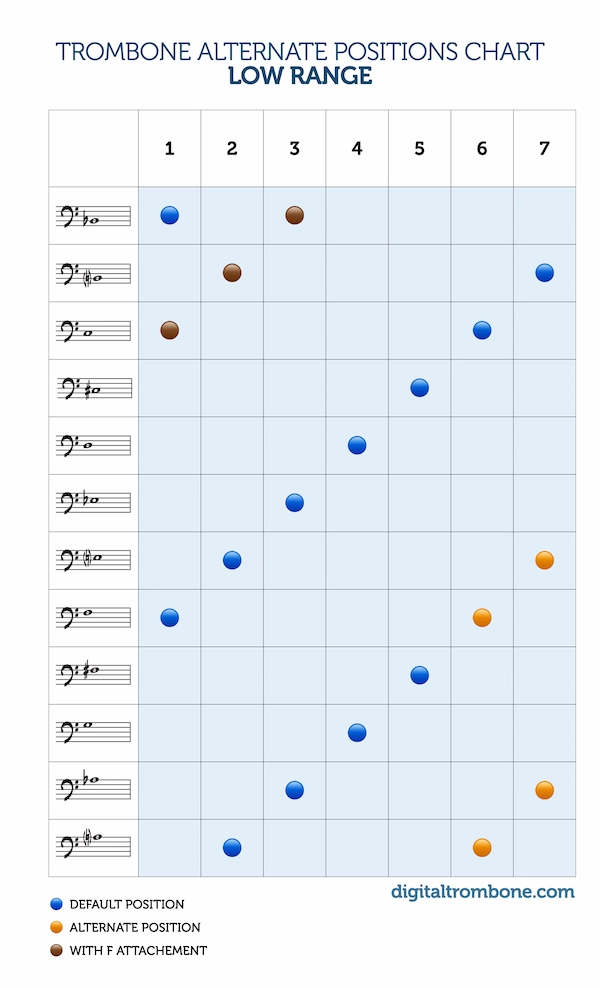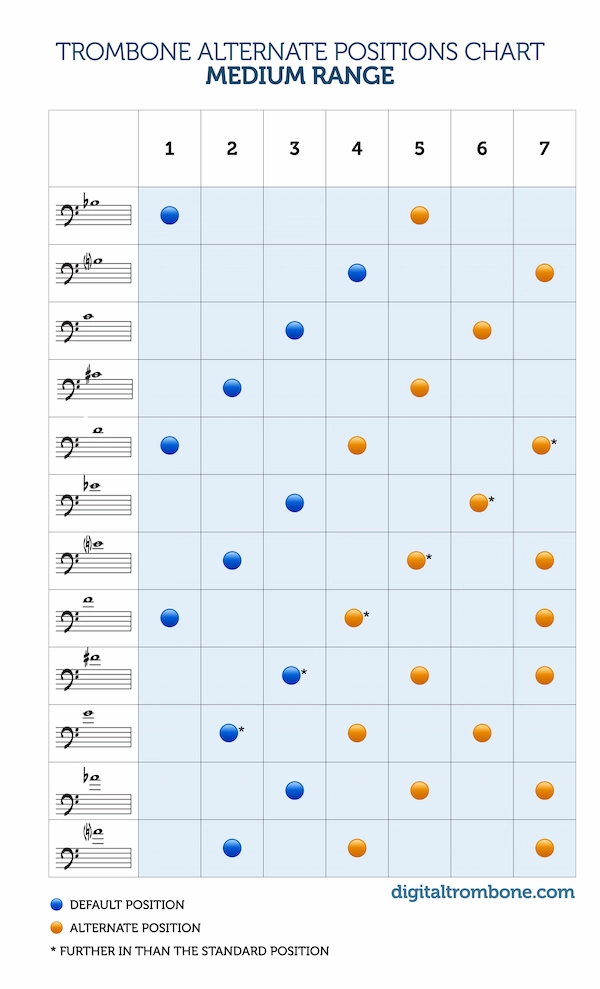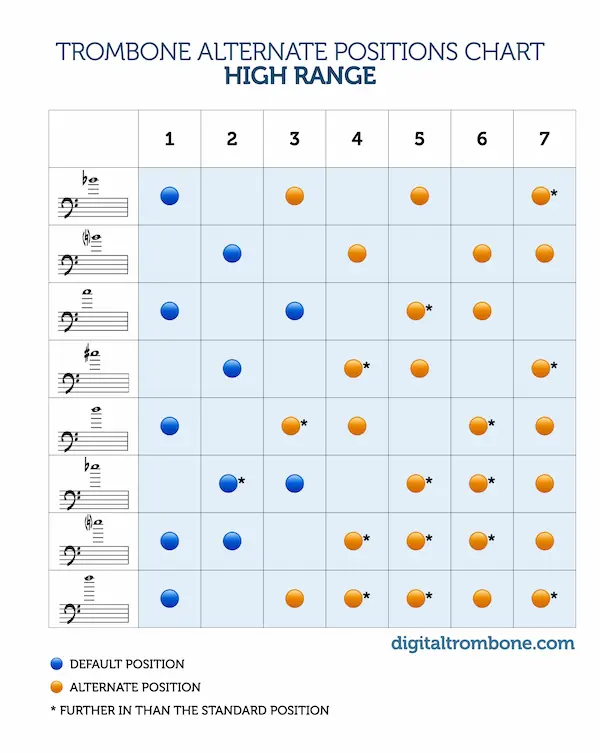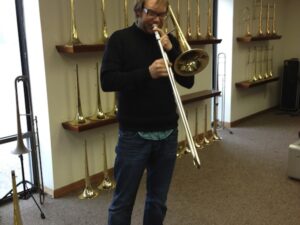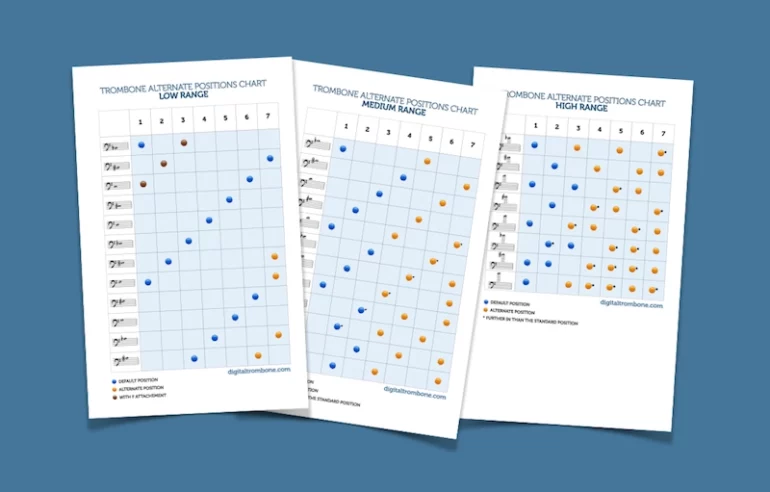
Trombone alternate positions
– the complete slide chart
Did you know that many notes on the trombone can be played on more than one slide position? If you play the trombone, you probably do. But I bet this chart will reveal some alternate positions you hadn’t yet discovered!
In the chart, I have noted both the default slide position for each note and the alternate position(s). The default position is marked with 🔵 and the alternate position is marked with 🟠.
The symbol 🟤 means you have to use a trigger or F attachment to play the note in that position.
Some of the symbols have an asterisk added to them. This means that you will have to place the slide further in than the standard position. For example, if the symbol 🔵* is located in the column for 3rd position, this means that you will have to place the slide somewhere in between the 3rd and 2nd position in order to play the note in tune.
Higher range = more alternate positions
As you can see in the charts, notes in the low range have no or few alternate positions. But as the range gets higher, alternate positions get more and more frequent. This is due to the fact that the intervals between the notes higher up in the harmonic series on the trombone get smaller and smaller.
Trombone range
The range on the trombone depends on your strength and embouchure. While a newbie might struggle to play the middle-Bb, you might be able to play 2 octaves higher than that. In the chart, I have included notes up to the very-high F. Anything beyond this note is not very usable. And once you get higher than this on the trombone, you can play any not on almost any slide position! If you can play the note in the first place…
Why use alternate positions?
Although trombone players mostly play a note in its default slide position, alternate positions are quite useful. You want to make your slide movements as smooth and short as possible, and alternate positions can really help you achieve this. Take a look at this sample. Which solution will result in the smoothest slide operation? Some keys call for specific alternate positions. As a rule of thumb, I recommend playing Bb on fifth position in keys that has both Cb and Bb (or B and A#) in them.

Download the complete alternate positions charts
Go grab your trombone and try playing all the notes in the charts in all possible positions. You will find that some are quite useless and mostly of academic interest, but many of them are really useful. Watch out for intonation – notes on alternate positions might have to be held slightly up or down. This varies from trombone to trombone, so find out what applies to your horn. Click each chart to download it in full size.
Good luck on your journey to get to know your trombone even better! If you have questions or input to the charts, please let me know.
Want to improve your trombone playing? Start your free trial to the membership section of this site – there are enough high-quality trombone sheet music and content to keep you busy for months and years!
Note that in the extreme high-range you can play almost any note in any slide position. I have found the high F on all positions but 2nd! What you should do, is find out what works best on your specific trombone. Which position offers the best sound, intonation, and secure attack? Try working that out for each of the very high notes. Play well!



